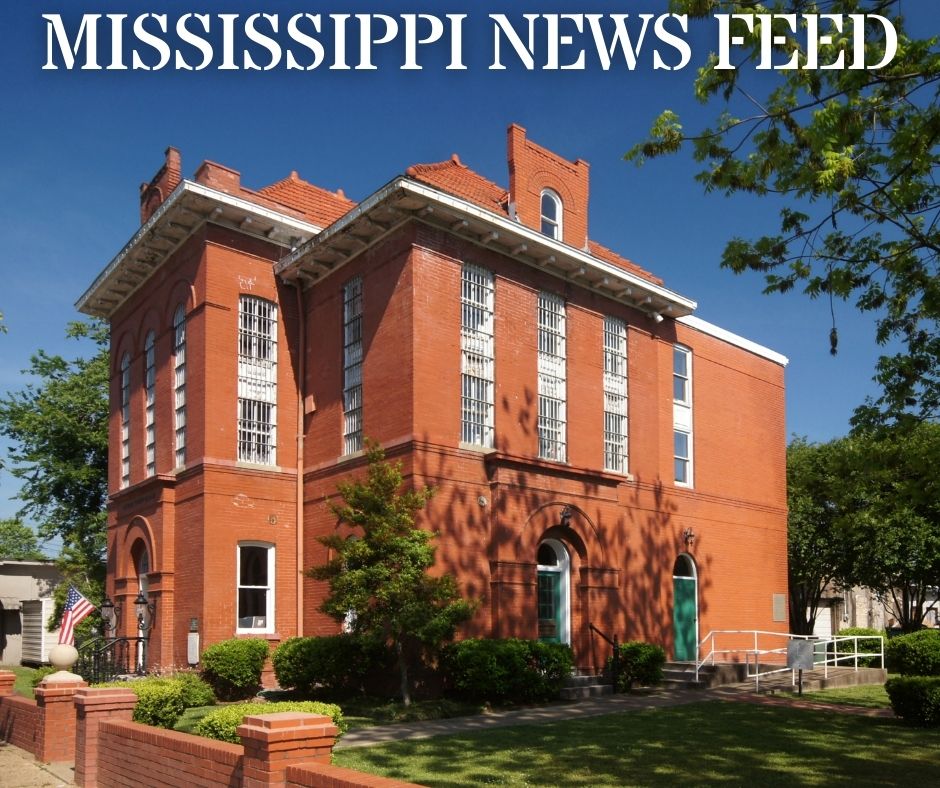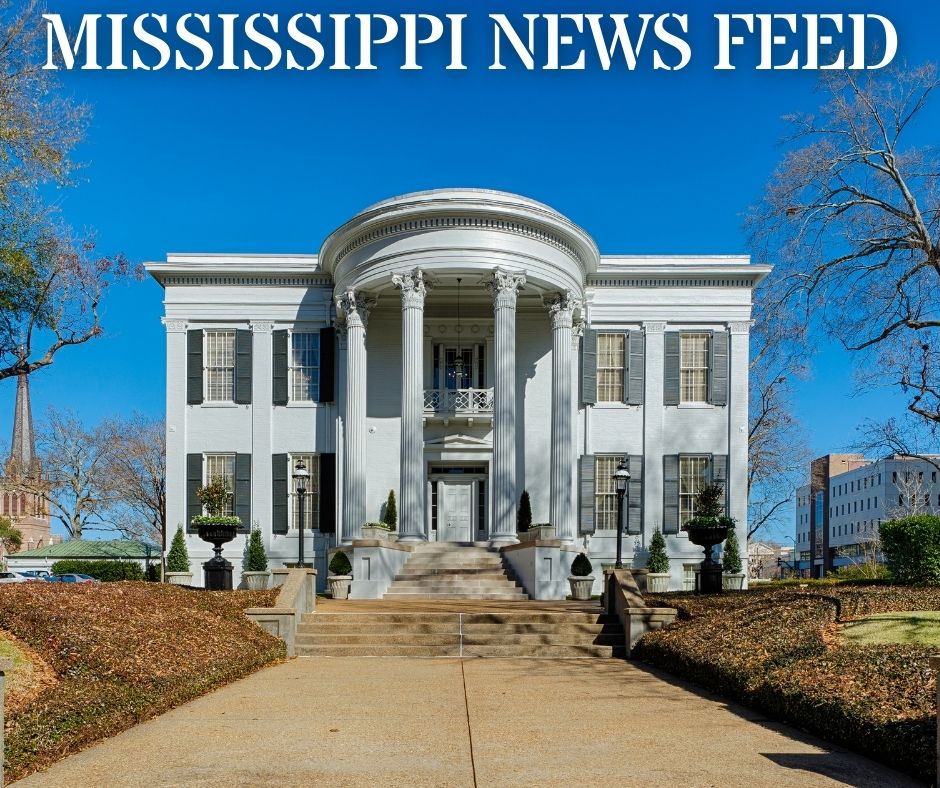Mississippi Today
State task force to tackle K-12, college students’ mental health
A committee of legislators and state leaders convened at the Capitol this week to discuss mental health issues facing young Mississippians.
School and health officials cited a scarcity of mental health professionals for K-12 and college students in Mississippi as a major issue.
Sen. Nicole Boyd, a Republican from Oxford who sponsored the bill that created the committee, said she was inspired in part by the success of the Senate Study Group on Women, Children and Families, which gave lawmakers the opportunity to study a complex topic before making legislative recommendations.
She said she expects the task force to produce legislation and provide an opportunity for state legislators and mental health leaders to connect with one another.
“We have networks that can solve a lot of these issues and professionals that can solve a lot of these issues if we pull them together and resource (them) properly,” she said.
The committee is chaired by Sen. David Parker, R-Olive Branch and chair of Senate Accountability, Efficiency, Transparency, and House Education Chair Rep. Rob Roberson, R-Starkville. It includes legislators, state officials, mental health and education professionals and one student. Roberson was not present for the meeting.
The first task force meeting consisted of presentations from state government and hospital officials with expertise in mental health and education.
Nonprofit and other experts will appear at upcoming meetings, according to Roberson.
Task force members paid close attention to the connections between Community Mental Health Centers and schools. The regional centers, which are certified by the Department of Mental Health but operate under the supervision of counties, must offer their services to public school districts. Services include intake and risk assessments, case management, day treatment, crisis support and parent education.
While most school districts utilize the centers, some contract with private providers and several do not use either.
“Our community mental health centers are a great resource across the state, and what we’re seeing is that school districts and our community colleges and universities in some places are not networked up,” said Boyd, who chairs the Senate Universities and Colleges committee.
She said she aims to strengthen the centers’ connections to schools.
Some task force members also indicated that they would like to see more mental health professionals – and staff trained to notice signs of mental health challenges – in schools.
Mississippi’s State Superintendent of Education Lance Evans said that the counselor to student ratio in Mississippi is 400 to one.
“I’m a little embarrassed to even say the number,” he said.
Wendy Bailey, executive director of the Mississippi Department of Mental Health, said there are 519 school therapists employed in the state.
“We easily need to double that,” she said.
There were 1,038 operating public elementary and secondary schools in Mississippi for the 2022-2023 school year, according to the National Center for Education Statistics.
Dr. Sara Gleason, assistant vice chancellor for clinical affairs at University of Mississippi Medical Center, shared data showing that Mississippi ranks 42nd in the nation for access to mental health providers for adults and children.

She said that there are 15 licensed child and adolescent psychiatrists with a primary practice in Mississippi.
Staffing shortages were cited as one of the primary limiting factors in ensuring that students receive proper mental health care.
“Whatever recommendations you make,” Bailey warned the task force, “if there’s not a workforce to implement them, it’s not going to work.
…There is a behavioral health workforce shortage in the state of Mississippi.”
Task force members also asked about limiting the use of cell phones in secondary schools, which several presenters said can negatively impact students’ mental health.
Evans said that though he expects pushback on a school cell phone ban, he “definitely” thinks the task force should look into it.
The committee tasked Evans with gathering information on cell phone policies for each school district across the state. He noted while much attention has been placed on Marshall County’s cell phone ban, it isn’t the only school district with such a policy.
The task force plans to reconvene Aug. 7 and is required to make recommendations to the Legislature by Oct. 1.
This article first appeared on Mississippi Today and is republished here under a Creative Commons license.
Mississippi Today
A Mississippi town moves a Confederate monument that became a shrouded eyesore
GRENADA (AP) — A Mississippi town has taken down a Confederate monument that stood on the courthouse square since 1910 — a figure that was tightly wrapped in tarps the past four years, symbolizing the community’s enduring division over how to commemorate the past.
Grenada’s first Black mayor in two decades seems determined to follow through on the city’s plans to relocate the monument to other public land. A concrete slab has already been poured behind a fire station about 3.5 miles (5.6 kilometers) from the square.
But a new fight might be developing. A Republican lawmaker from another part of Mississippi wrote to Grenada officials saying she believes the city is violating a state law that restricts the relocation of war memorials or monuments.
The Grenada City Council voted to move the monument in 2020, weeks after police killed George Floyd in Minneapolis. The vote seemed timely: Mississippi legislators had just retired the last state flag in the U.S. that prominently featured the Confederate battle emblem.
The tarps went up soon after the vote, shrouding the Confederate soldier and the pedestal he stood on. But even as people complained about the eyesore, the move was delayed by tight budgets, state bureaucracy or political foot-dragging. Explanations vary, depending on who’s asked.
A new mayor and city council took office in May, prepared to take action. On Sept. 11, with little advance notice, police blocked traffic and a work crew disassembled and removed the 20-foot (6.1-meter) stone structure.
“I’m glad to see it move to a different location,” said Robin Whitfield, an artist with a studio just off Grenada’s historic square. “This represents that something has changed.”
Still, Whitfield, who is white, said she wishes Grenada leaders had invited the community to engage in dialogue about the symbol, to bridge the gap between those who think moving it is erasing history and those who see it as a daily reminder of white supremacy. She was among the few people watching as a crane lifted parts of the monument onto a flatbed truck.
“No one ever talked about it, other than yelling on Facebook,” Whitfield said.
Mayor Charles Latham said the monument has been “quite a divisive figure” in the town of 12,300, where about 57% of residents are Black and 40% are white.
“I understand people had family and stuff to fight and die in that war, and they should be proud of their family,” Latham said. “But you’ve got to understand that there were those who were oppressed by this, by the Confederate flag on there. There’s been a lot of hate and violence perpetrated against people of color, under the color of that flag.”
The city received permission from the Mississippi Department of Archives and History to move the Confederate monument, as required. But Rep. Stacey Hobgood-Wilkes of Picayune said the fire station site is inappropriate.
“We are prepared to pursue such avenues that may be necessary to ensure that the statue is relocated to a more suitable and appropriate location,” she wrote, suggesting a Confederate cemetery closer to the courthouse square as an alternative. She said the Ladies Cemetery Association is willing to deed a parcel to the city to make it happen.
The Confederate monument in Grenada is one of hundreds in the South, most of which were dedicated during the early 20th century when groups such as the United Daughters of the Confederacy sought to shape the historical narrative by valorizing the Lost Cause mythology of the Civil War.
The monuments, many of them outside courthouses, came under fresh scrutiny after an avowed white supremacist who had posed with Confederate flags in photos posted online killed nine Black people inside the historic Emanuel African Methodist Episcopal Church in Charleston, South Carolina, in 2015.
Grenada’s monument includes images of Confederate president Jefferson Davis and a Confederate battle flag. It was engraved with praise for “the noble men who marched neath the flag of the Stars and Bars” and “the noble women of the South,” who “gave their loved ones to our country to conquer or to die for truth and right.”
A half-century after it was dedicated, the monument’s symbolism figured in a voting rights march. When the Rev. Martin Luther King Jr. and other civil rights leaders held a mass rally in downtown Grenada in June 1966, Robert Green of the Southern Christian Leadership Conference scrambled up the pedestal and planted a U.S. flag above the image of Davis.
The cemetery is a spot Latham himself had previously advocated as a new site for the monument, but he said it’s too late to change now, after the city already budgeted $60,000 for the move.
“So, who’s going to pay the city back for the $30,000 we’ve already expended to relocate this?” he said. “You should’ve showed up a year and a half ago, two years ago, before the city gets to this point.”
A few other Confederate monuments in Mississippi have been relocated. In July 2020, a Confederate soldier statue was moved from a prominent spot at the University of Mississippi to a Civil War cemetery in a secluded part of the Oxford campus. In May 2021, a Confederate monument featuring three soldiers was moved from outside the Lowndes County Courthouse in Columbus to another cemetery with Confederate soldiers.
Lori Chavis, a Grenada City Council member, said that since the monument was covered by tarps, “it’s caused nothing but more divide in our city.”
She said she supports relocating the monument but worries about a lawsuit. She acknowledged that people probably didn’t know until recently exactly where it would reappear.
“It’s tucked back in the woods, and it’s not visible from even pulling behind the fire station,” Chavis said. “And I think that’s what got some of the citizens upset.”
This article first appeared on Mississippi Today and is republished here under a Creative Commons license.
Crooked Letter Sports Podcast
Podcast: New Orleans sports columnist and author Jeff Duncan joins the podcast to talk about his new Steve Gleason book and the new-look New Orleans Saints.
Jeff Duncan went from the Mississippi Book Festival in Jackson on Saturday to Jerry World in Dallas on Sunday where he watched and wrote about the Saints’ total dismantling of the Dallas Cowboys. We talk about both events and also about what happened in high school and college football last weekend and what’s coming up this weekend.
Stream all episodes here.
This article first appeared on Mississippi Today and is republished here under a Creative Commons license.
Mississippi Today
On this day in 1899
Sept. 18, 1899

Scott Joplin, known as “the King of Ragtime,” copyrighted the “Maple Leaf Rag,” which became the first song to sell more than 1 million copies of sheet music. The popularity launched a sensation surrounding ragtime, which has been called America’s “first classical music.”
Born near Texarkana, Texas, Joplin grew up in a musical family. He worked on the railroad with other family members until he was able to earn money as a musician, traveling across the South. He wound up playing at the World’s Fair in Chicago in 1893, where he met fellow musician Otis Saunders, who encouraged him to write down the songs he had been making up to entertain audiences. In all, Joplin wrote dozens of ragtime songs.
After some success, he moved to New York City, hoping he could make a living while stretching the boundaries of music. He wrote a ragtime ballet and two operas, but success in these new forms eluded him. He was buried in a pauper’s grave in New York City in 1917.
More than six decades later, his music was rediscovered, initially by Joshua Rifkin, who recorded Joplin’s songs on a record, and then Gunther Schuller of the New England Conservatory, who performed four of the ragtime songs in concert: “My faculty, many of whom had never even heard of Joplin, were saying things like, ‘My gosh, he writes melodies like Schubert!’”
Joplin’s music won over even more admirers through the 1973 movie, “The Sting,” which won an Oscar for the music. His song, “The Entertainer,” reached No. 3 on Billboard and was ranked No. 10 among “Songs of the Century” list by the Recording Industry Association of America. His opera “Treemonisha” was produced to wide acclaim, and he won a Pulitzer Prize in 1976 for his special contribution to American music.
“The ragtime craze, the faddish thing, will obviously die down, but Joplin will have his position secure in American music history,” Rifkin said. “He is a treasurable composer.”
This article first appeared on Mississippi Today and is republished here under a Creative Commons license.
-
Mississippi News Video6 days ago
Woman arrested after reposting school threat in Calhoun County
-
News from the South - Louisiana News Feed6 days ago
Food drive underway for Hurricane Francine victims in Kenner
-
Mississippi Today3 days ago
On this day in 1925
-
News from the South - Kentucky News Feed5 days ago
The search for Joseph Couch intensifies
-
News from the South - Alabama News Feed3 days ago
Diddy Arrested In Manhattan | September 16, 2024 | News 19 at 10 p.m.
-
News from the South - Alabama News Feed5 days ago
Sylacauga Church welcomes Haitian migrants amid speculations
-
Mississippi Today3 days ago
Another Midwest drought is causing transportation headaches on the Mississippi River
-
News from the South - Florida News Feed7 days ago
Tropics update: Tropical Depression 7, 2 other disturbances brewing in Atlantic










































